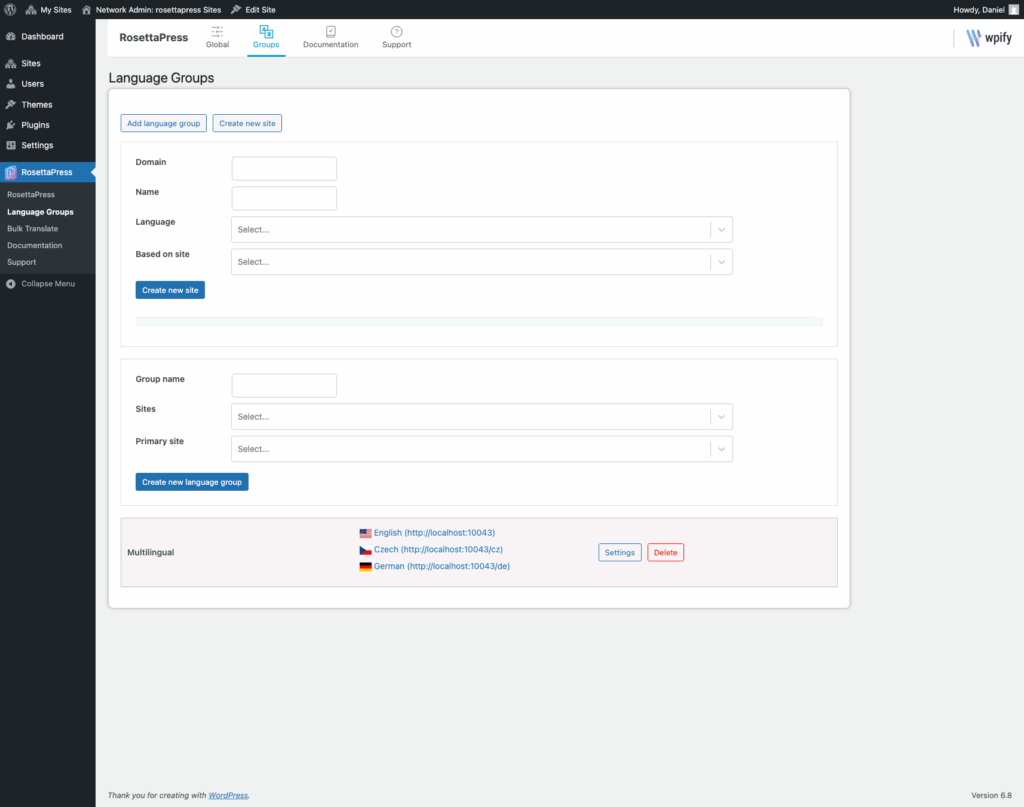Language Groups are essential in RosettaPress for managing multilingual relationships between sites in a WordPress multisite network.
Each group connects a set of sites and defines how content should be linked, cloned, or synchronized across different languages.
What Is a Language Group?
A Language Group links two or more subsites that represent different languages of the same content. One of these is marked as the Primary Site, which acts as the default content source.

Creating a Language Group
- Go to Network Admin → RosettaPress → Language Groups.
- Click Add New Language Group.
- Enter a Group Name.
- Add existing subsites to the group using the dropdown.
- Choose a Primary Site.
- Save the group.
Only sites not already part of another group will be available for selection.
Optional: Create a New Site
If you don’t have all your subsites created yet, you can do so directly from this screen by clicking “Create new site”. This tool allows you to quickly generate a new subsite configured for multilingual use.
Fields:
- Domain: The URL slug for the new site (e.g.
fr→ yourdomain.com/fr) - Name: The site title, used for internal identification
- Language: Assign the language for this new site
- Based on site: Choose an existing site to clone from (content, settings, etc.)
- Exclude tables: (Optional) Prevent specific database tables from being copied (e.g. analytics or cache)
- Copy users with roles: Choose which user roles (like Administrator or Editor) should be copied to the new site
Once you configure the settings, click Create new site and the subsite will be added to the network and available to include in your language group.
Managing Language Groups
You can always return to this screen to:
- Add or delete the group
- Edit the group
Each site can belong to only one group at a time.
Language Groups give RosettaPress the structure it needs to enable seamless multilingual workflows – from content linking to automatic cloning and synchronization.